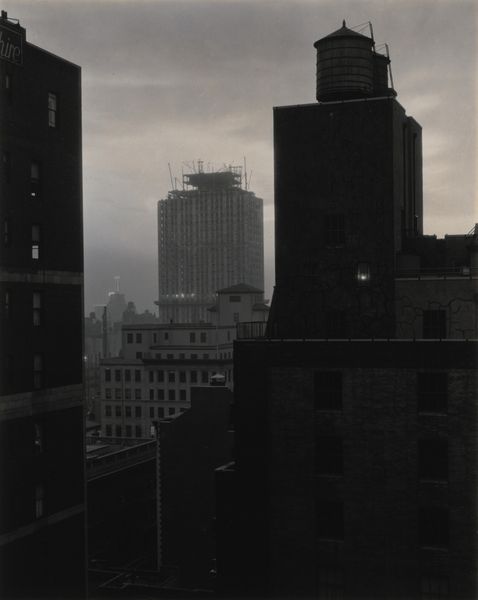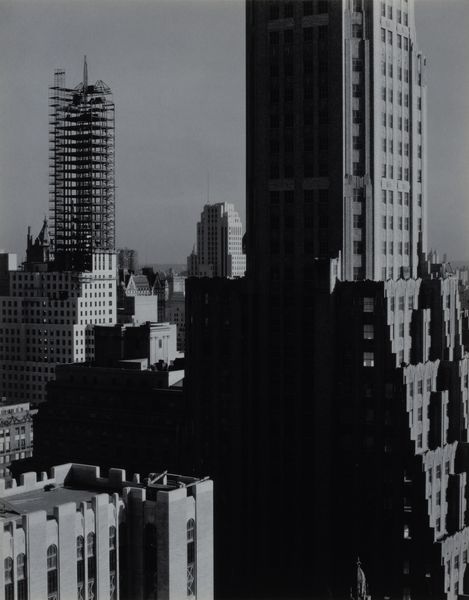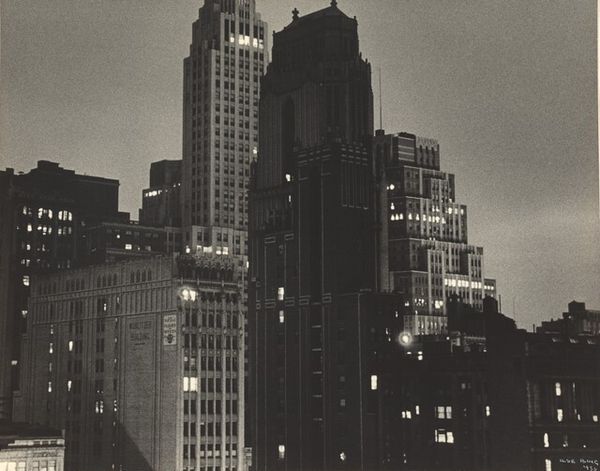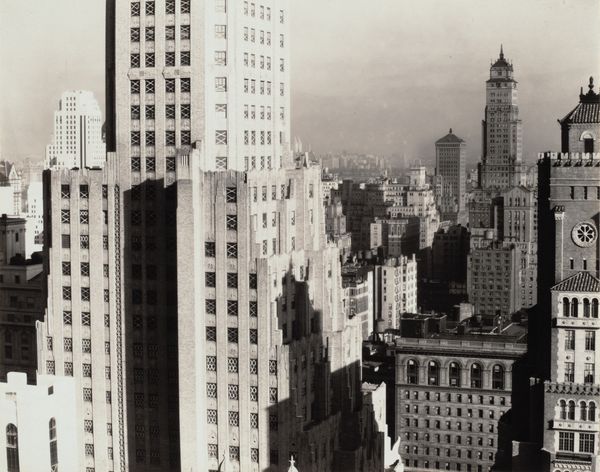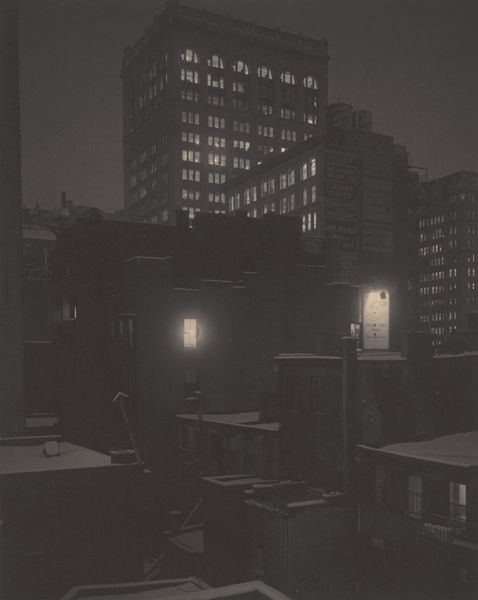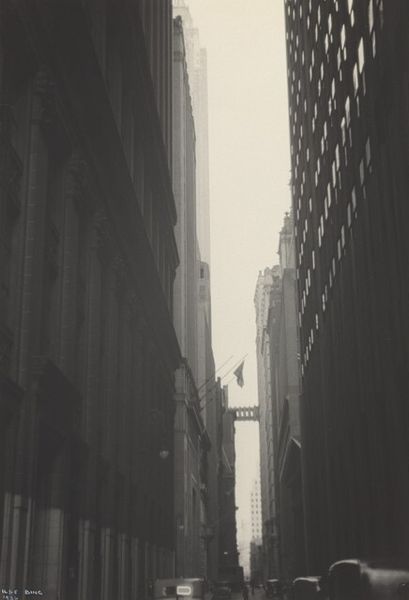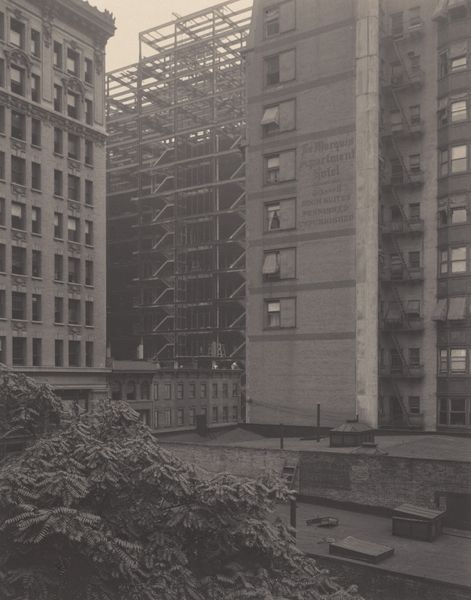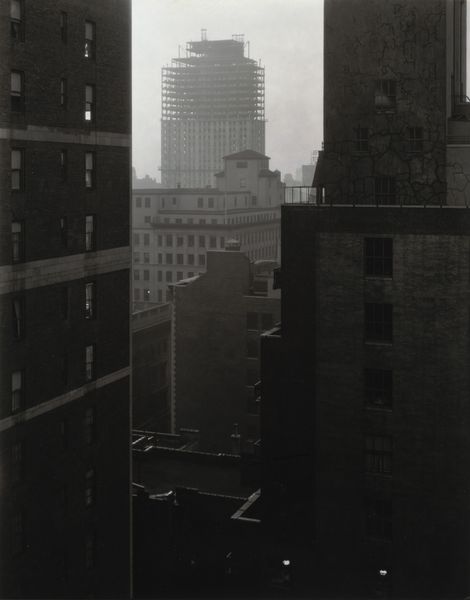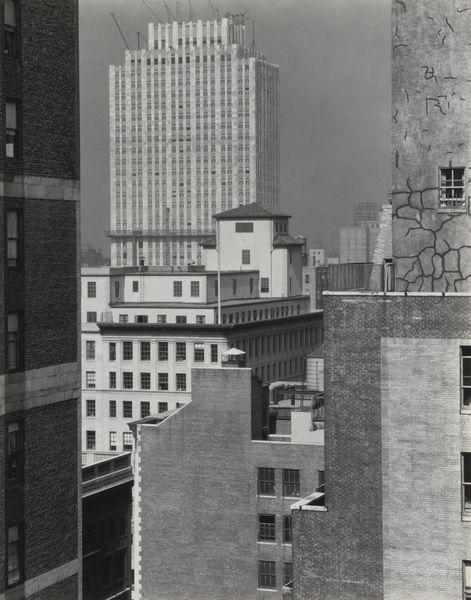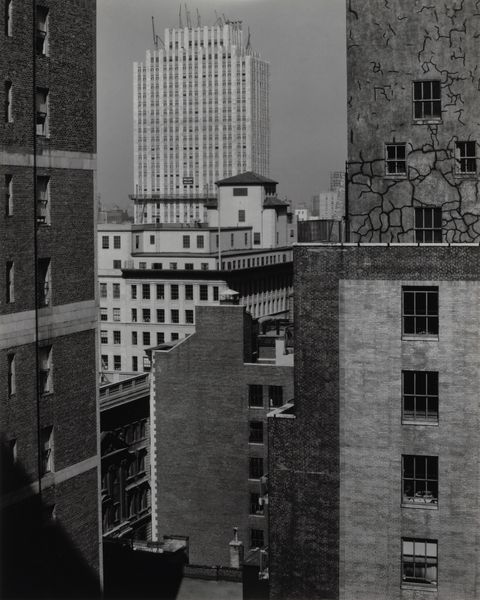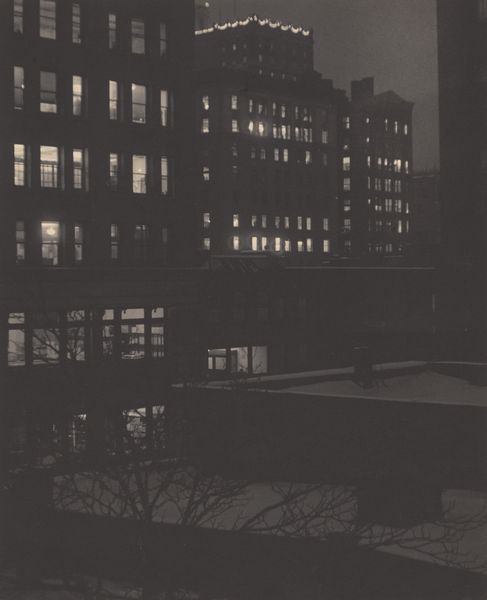
photography
#
precisionism
#
black and white photography
#
pictorialism
#
black and white format
#
photography
#
monochrome photography
#
cityscape
#
monochrome
#
realism
#
monochrome
Dimensions: sheet (trimmed to image): 23.8 x 19 cm (9 3/8 x 7 1/2 in.) mount: 55.2 x 42.6 cm (21 3/4 x 16 3/4 in.)
Copyright: National Gallery of Art: CC0 1.0
Curator: Looking at Alfred Stieglitz's "From My Window at An American Place, Southwest," created in 1932, all I feel is this almost haunting loneliness, like I'm spying on a sleeping city. Does it hit you that way too? Editor: Initially, yes, a muted and melancholic key. But look at how Stieglitz organizes the frame. The dark, imposing buildings in the foreground act as a kind of aperture, directing our gaze. There’s a sophisticated use of tonal contrast that establishes depth. Curator: "Sophisticated," yes, but there’s more! It feels like he's not just showing us buildings but the breath of the city itself, all this potential held back by a gray sky. Like waiting for something to burst, maybe hope, or just...more grey? Editor: I concur; that nuanced, emotive quality can’t be discounted. This was taken during the Depression era, after all. The uncompleted skyscraper hints at a sense of unfulfilled promise—the ambition of industry curtailed by economic hardship. Consider that in the context of Stieglitz's previous symbolist work with cloud studies; here, urban structures take on symbolic weight. Curator: Right, these are not just photos of buildings; they're portraits of a mood. This one in particular has that almost desperate feeling of watching, hoping that somehow, despite everything, things will look up... quite literally toward that grey sky. The precision mixed with feeling gives this photo so much character. It really pulls at the imagination, doesn't it? Editor: Absolutely, and the beauty of this lies in its composition: how he’s converted emotion and societal mood into line, contrast, and structure. This structured presentation of complex sentiment through urban portraiture, rather than through symbolic artifice alone, is Stieglitz’s genius. Curator: Indeed, genius seems a fit way to capture Stieglitz’s vision; now that our brief, hopefully inspiring journey looking through Stieglitz's window is complete, let’s take another look ourselves.
Comments
No comments
Be the first to comment and join the conversation on the ultimate creative platform.
